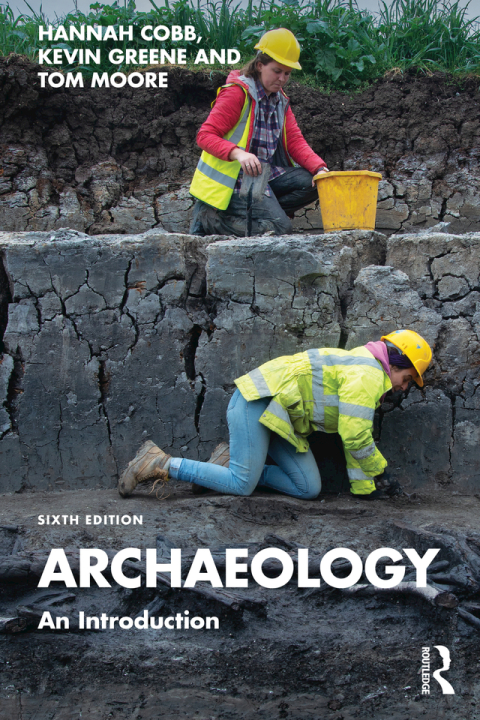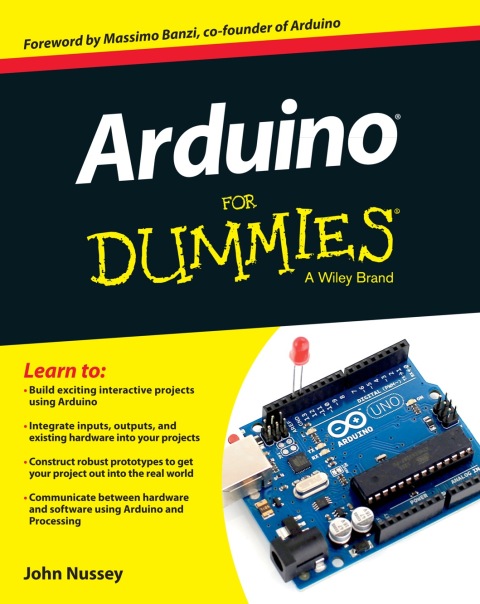Description
Efnisyfirlit
- Cover
- Half Title
- Title
- Copyright
- Table of Contents
- List of illustrations
- List of tables
- Preface
- Acknowledgements
- Referencing
- Glossary and index
- 1 The Idea of the Past
- 1.1 The intellectual history of archaeology
- 1.1.1 Archaeology and antiquarianism, prehistory and history
- 1.1.2 The problem of origins and time
- 1.2 The emergence of archaeological methods
- 1.2.1 A prehistoric concern for prehistory
- 1.2.2 Greece and Rome
- 1.2.3 Medieval attitudes to antiquity
- 1.2.4 From medieval humanism to the Renaissance
- 1.1 The past in the present: developing analogies with the Americas
- 1.2.5 Archaeology and the Enlightenment
- 1.2.6 Antiquarian fieldwork
- 1.2 William Camden (1551–1623)
- 1.2.7 Antiquarianism in the Americas
- 1.2.8 Touring, collecting and the origin of museums
- 1.3 Discovering the archaeology of North America: the Mounds of Ohio and Illinois
- 1.2.9 Science and Romanticism
- 1.3 The recognition and study of artefacts
- 1.3.1 Scandinavia and the Three-Age System
- 1.3.2 Typology
- 1.4 Recognising human origins
- 1.4.1 Evidence for human antiquity
- 1.4 The great societies: archaeology comes of age?
- 1.4.2 Catastrophists, uniformitarians and the impact of Darwin
- 1.5 From hunting to farming
- 1.5.1 World prehistory
- 1.6 The discovery of civilisations
- 1.6.1 Greece and Rome
- 1.6.2 Egypt and Mesopotamia
- 1.5 Plundering and collecting: Belzoni and Lord Elgin
- 1.6.3 The Aegean Bronze Age: Schliemann and Troy
- 1.6 Pioneer of Southwest Asian archaeology: Gertrude Bell
- 1.6.4 Greece and the Aegean: Evans and Knossos
- 1.6.5 India and Asia
- 1.6.6 Civilisations in the Americas
- 1.7 Achievements of early archaeology
- 1.7 V. Gordon Childe: twentieth-century archaeology begins to model the past
- 1.7.1 Excavation: the investigative technique of the future
- 1.8 Guide to further reading
- 1.8.1 The intellectual history of archaeology
- 1.8.2 Archaeology and antiquarianism, prehistory and history
- 1.8.3 The emergence of archaeological methods
- 2 Discovery and Investigation
- 2.1 Sites or landscapes?
- 2.2 Field archaeology
- 2.2.1 Field survey
- 2.2.2 Fieldwalking
- 2.1 Sampling in landscape survey
- 2.2.3 Recording and topographic/earthwork surveying
- 2.2.4 Historic landscape and monument inventories
- 2.2.5 Underwater survey
- 2.3 Remote sensing
- 2.3.1 Airborne prospection
- 2.2 Cropmark formation
- 2.3 Historic Landscape Characterisation (HLC)
- 2.4 Airborne topographic survey: lidar
- 2.3.2 Geophysical and geochemical surveying
- 2.5 Geophysical survey techniques
- 2.6 Geophysical survey responses
- 2.4 Geographical information systems (GIS)
- 2.7 GIS and predictive modelling: the location of Roman villas near Veii, Italy
- 2.5 Landscape archaeology
- 2.6 Conclusions
- 2.7 Guide to further reading
- 2.7.1 Historic Environment Records
- 2.7.2 Underwater survey
- 2.7.3 Remote sensing
- 2.7.4 Airborne prospection
- 2.7.5 Geophysical and geochemical surveying
- 2.7.6 Geographical information systems (GIS)
- 3 Excavation
- 3.1 The development of excavation techniques
- 3.1.1 The concept of stratification
- 3.1.2 General Pitt Rivers
- 3.1 Development of excavation techniques: Mortimer and Tessa Wheeler
- 3.1.3 Developments in the twentieth century
- 3.1.4 Mortimer and Tessa Wheeler
- 3.2 Trowelblazers
- 3.1.5 From keyhole trenches to open-area excavation
- 3.1.6 The future of excavation
- 3.3 Stratigraphic recording
- 3.2 The interpretation of stratification
- 3.2.1 Dating stratification
- 3.3 Planning an excavation
- 3.3.1 Excavation, ethics and theory
- 3.4 Responsibilities of excavators: selection of items from the Chartered Institute for Archaeologists’ code of conduct (October 2021 revisions)
- 3.3.2 Selection of a site
- 3.5 Changing research priorities: the example of Roman Britain
- 3.3.3 Developer-funded archaeology and the case study of planning policy in England
- 3.6 Planning and excavation: key definitions from the National Planning Policy Framework (NPPF)
- 3.3.4 Background research
- 3.4 Excavation strategy
- 3.4.1 Forms of sites
- 3.4.2 Excavation in special conditions
- 3.4.3 Contexts and features
- 3.7 Positive features: section of Roman Ermin Street
- 3.8 Negative features: Iron Age storage pits
- 3.9 Surfaces: floor levels
- 3.4.4 Structures and materials
- 3.4.5 Standing buildings
- 3.4.6 Reconstruction
- 3.5 Records, archives and publication
- 3.5.1 Recording
- 3.5.2 Digital recording
- 3.5.3 Reflexive fieldwork
- 3.5.4 Publication and archiving the results
- 3.6 Guide to further reading
- 3.6.1 Online resources
- 3.6.2 Archaeological methods
- 3.6.3 Development of excavation techniques and archaeologists
- 4 Dating the Past
- 4.1 Background
- 4.2 Typology and cross-dating
- 4.2.1 Sequence dating and seriation
- 4.3 Historical dating
- 4.1 Using seriation: Native American sites in New York State
- 4.2 Which dating technique?
- 4.3.1 Applying historical dates to sites
- 4.4 Scientific dating techniques
- 4.4.1 Geological timescales
- 4.4.2 Climatostratigraphy
- 4.4.3 Varves
- 4.4.4 Palynostratigraphy
- 4.4.5 Dendrochronology
- 4.3 Alchester: dendrochronology in action
- 4.5 Absolute techniques
- 4.5.1 Radioactive decay
- 4.5.2 Radiocarbon dating
- 4.4 The first radiocarbon revolution: Willard Libby
- 4.5.3 Presenting and interpreting a radiocarbon date
- 4.5.4 The Bayesian radiocarbon revolution
- 4.5.5 Potassium–argon (40K/40Ar) and argon–argon dating (40Ar/39Ar)
- 4.5.6 Uranium-series dating
- 4.5.7 Fission-track dating
- 4.5.8 Tephrochronology
- 4.5 Vikings, fire and ice: the application of tephrochronology
- 4.5.9 Luminescence dating
- 4.6 Optical stimulated luminescence: Deaf Adder Gorge, Australia
- 4.5.10 Electron spin resonance (ESR)
- 4.6 Derivative techniques
- 4.6.1 Protein and amino acid diagenesis dating
- 4.6.2 Obsidian hydration dating
- 4.6.3 Archaeomagnetic dating
- 4.7 The authenticity of artefacts
- 4.8 Conclusions
- 4.7 Dating an archaeological excavation
- 4.9 Guide to further reading
- 5 Archaeological Science
- 5.1 The nature of science
- 5.2 The environment
- 5.3 Climate
- 5.1 Climate and the human past
- 5.4 The geosphere
- 5.4.1 Geology
- 5.4.2 Soils
- 5.5 The biosphere
- 5.5.1 Plants
- 5.2 Small but vital: plant and animal remains recovered by means of flotation
- 5.3 Domestication of maize in the Americas
- 5.5.2 Animals
- 5.4 Charting animal domestication
- 5.5 Ceramics and food remains: gas chromatography
- 5.5.3 Fish
- 5.5.4 Shells: archaeomalacology
- 5.5.5 Insects and other invertebrates
- 5.6 Humans
- 5.6.1 Burials
- 5.6 Human remains and evidence of warfare: Towton Moor
- 5.6.2 Palaeopathology and evidence from human remains
- 5.7 DNA and disease: the archaeology of tuberculosis
- 5.6.3 Diet
- 5.6.4 Movement and migration
- 5.8 Movement and migration: Bronze Age Beaker burials
- 5.9 Isola Sacra: diet and migration in Ancient Rome
- 5.6.5 Genetics and DNA
- 5.7 Artefacts and raw materials
- 5.7.1 Methods of examination and analysis
- 5.7.2 Stone
- 5.7.3 Ceramics
- 5.7.4 Metals
- 5.8 Conservation
- 5.8.1 Ancient objects
- 5.10 Roman coins
- 5.8.2 Historic buildings and archaeological sites
- 5.9 Statistics
- 5.10 Experimental archaeology
- 5.11 Experimental archaeology
- 5.10.1 Artefacts
- 5.10.2 Sites and structures
- 5.11 Conclusion
- 5.12 Guide to further reading
- 6 Making Sense of the Past
- 6.1 What is archaeological theory?
- 6.1 Archaeological theory and changing perspectives
- 6.1.1 Social evolution
- 6.1.2 Culture history
- 6.2 Nationalism and archaeology
- 6.2 Towards processual archaeology
- 6.2.1 The New Archaeology
- 6.3 Reconstructing past societies: hierarchies, heterarchies and social complexity
- 6.2.2 Ethnoarchaeology and Middle Range Theory
- 6.3 Towards postprocessual archaeology
- 6.3.1 Postprocessualism
- 6.3.2 Reflexive thinking
- 6.3.3 Modernity, modernism and postmodernism
- 6.4 Phenomenology: postprocessualism and landscape archaeology
- 6.4 Interpretive archaeology
- 6.4.1 Agency, structuration and habitus
- 6.4.2 Archaeologies of identity
- 6.4.3 Artefacts: biographies, materiality, fragmentation and personhood
- 6.5 Archaeological theory in the new millennium
- 6.5.1 Entanglement
- 6.5.2 Actor-network theory and symmetrical archaeology
- 6.5.3 Assemblages and new materialism
- 6.5.4 Perspectivism and posthumanism
- 6.6 Conclusion: pasts, presents and futures of archaeological theory
- 6.7 Guide to further reading
- 7 The Past in The Present and the Future
- 7.1 Where is archaeology at the beginning of the twenty-first century?
- 7.1.1 Too much information?
- 7.1 Are all visions of the past equal? Pseudo-archaeology
- 7.2 Archaeology and the public
- 7.2.1 Heritage management: controlling the present by means of the past?
- 7.2.2 Archaeology and the State
- 7.2 Heritage management: state protection
- 7.3 Tourism and heritage: Kenilworth Castle
- 7.2.3 Public archaeology
- 7.4 Community co-production of heritage: the ACCORD project’
- 7.2.4 Heritage management and heritage practice: the case of Stonehenge
- 7.3 Archaeology, museums and antiquities
- 7.3.1 Museums: from art galleries to experience and activism
- 7.3.2 The antiquities trade
- 7.5 Lost treasures of Iraq: war and cultural heritage
- 7.6 Archaeology and ethics: the case of human remains
- 7.4 Archaeology and the future
- 7.4.1 Modelling the future and defining the Anthropocene
- 7.4.2 Archaeology and climate crisis
- 7.4.3 Heritage futures
- 7.7 Heritage futures: The future of nuclear waste
- 7.5 Conclusion: past, present, future and you
- 7.8 A passport to the past: archaeological skills passports and continuous professional development
- 7.6 Guide to further reading
- Glossary
- Bibliography
- Index







Reviews
There are no reviews yet.